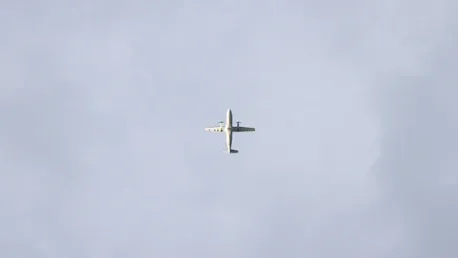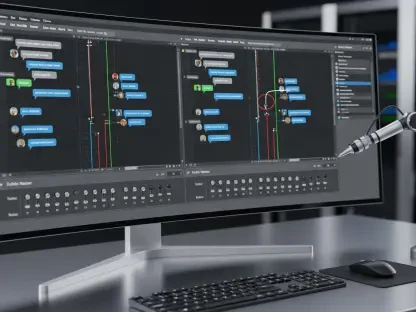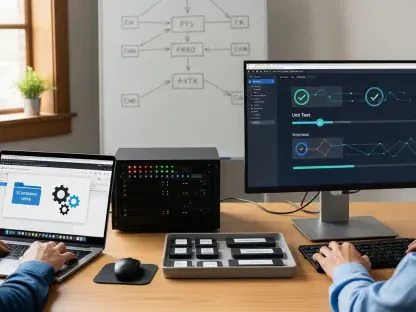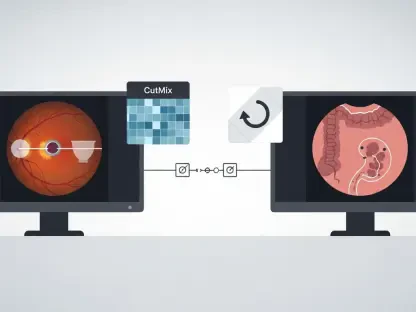Flightradar24, the renowned real-time flight tracking service, has recently undergone a series of significant enhancements aimed at revolutionizing its performance and user experience. At the heart of these advancements is the integration of WebGL, coupled with other technological improvements that collectively elevate the service.
Enhanced Visual Performance with WebGL
The Power of WebGL in Web Applications
WebGL, or Web Graphics Library, is a powerful technology that enables the rendering of complex graphics and animations within web browsers. Flightradar24’s adoption of WebGL allows for the smoother and faster display of thousands of aircraft icons in real-time. Unlike traditional methods, WebGL leverages the computer’s graphical processing unit (GPU) instead of the more general central processing unit (CPU). This approach not only accelerates the rendering process but also significantly improves the quality and intricacies of visual data.
The integration of WebGL means users can now experience uninterrupted and seamless interaction on Flightradar24’s platform. The significant technological boost results in faster load times, smoother transitions, and the ability to handle a larger volume of data without compromising on speed or quality. This enhancement ensures that when users track flights, every movement—from subtle changes in aircraft positioning to the comprehensive visualization of thousands of flights simultaneously—is delivered with heightened clarity and speed.
Smoother User Experience
With the integration of WebGL, users will notice a notable improvement in the fluidity of interactions on the Flightradar24 platform. Panning, zooming, and tracking flights are now more seamless, providing an enhanced user experience for modern browser users. The fluidity extends beyond mere visuals; WebGL’s impact is profoundly felt in the responsive nature of the interface. Flightradar24 has taken significant strides to ensure that every user interaction is intuitive, freeing users from the jerky, disjointed experience often associated with heavy graphical loads.
Moreover, WebGL’s compatibility with most modern web browsers ensures that a vast majority of users will benefit from the enhancements without needing to upgrade or change their current system configurations. This democratization of sophisticated graphical technology means a universal improvement, bridging the gap between advanced tech and everyday user accessibility. As a result, users can engage in real-time flight tracking with heightened ease, whether on desktops or handheld devices.
Transition to Vector-Based Maps
Faster Map Loading Times
One of the most significant changes is the shift from raster-based maps to vector-based maps. This transition leads to quicker map loading times, ensuring users can access flight information without delay. Vector-based maps offer a remarkable advantage over their raster counterparts by being resolution-independent, allowing for high-quality rendering at any zoom level. Raster maps, built from a grid of pixels, suffer from blurriness and increased load times when scaled, a limitation effectively addressed by vector graphics.
The switch to vector-based maps translates into practical benefits, where users experience less latency and more consistent performance during navigation. Each interaction with the map—from zooming in to panning across—is executed with precision and speed, enhancing the overall efficiency of the Flightradar24 platform. This technological leap reduces the wait time for information, facilitating more immediate access to critical flight data and enhancing overall satisfaction for users expecting prompt updates.
Dynamic User Control
Vector-based maps eliminate fixed zoom levels, granting users greater flexibility to zoom in or out as needed. This additional control contributes to a more dynamic and customizable viewing experience. Unlike traditional raster maps where zoom is confined to preset levels, vector maps are scalable to any degree, allowing users to tailor their view specifically to their needs. This flexibility means users can adjust their focus seamlessly, whether keeping track of specific aircraft or getting a broader overview of air traffic patterns.
Such dynamic controls empower users to personalize their engagement with the data, fostering a more interactive and enjoyable experience. The ability to adjust views in real-time without predefined limitations emphasizes Flightradar24’s commitment to user autonomy and innovation. As users navigate the maps, they can explore areas with unparalleled detail and clarity, reinforcing the service’s position as a leader in flight tracking technology and user experience enhancement.
Improved Data Granularity and Customization
Detailed Aircraft Trails
Aircraft icons and trails now benefit from WebGL rendering, offering increased data granularity. Users can see each data point of an aircraft’s trail more clearly, particularly during ground movements or in-flight turns. This granularity is significant for users who rely on accurate and detailed flight data, such as aviation professionals, enthusiasts, and analysts. Each point on an aircraft’s trail is meticulously captured and presented with enhanced precision, providing invaluable insights into flight paths, speed variations, and altitude changes.
Furthermore, by visualizing the dense and detailed aircraft trails, users can gain a deeper understanding of flight operations, analyze patterns, and make informed decisions based on real-time data. The technological upgrade ensures that even the minutest movements are recorded and displayed with high fidelity, offering a level of detail that was previously unattainable. This advancement underscores Flightradar24’s dedication to delivering the most comprehensive flight tracking experience available.
Customizable Icon Sizes
Flightradar24 introduces a slider feature allowing users to adjust the size of aircraft icons according to their preference. This customization adds a personal touch to the flight tracking experience, catering to individual user needs. The slider function reflects the service’s commitment to personalization, enabling users to navigate the platform based on their unique requirements and viewing comfort. Adjusting icon sizes enhances visibility and interaction, allowing users to distinguish between different aircraft types or track specific flights more easily.
Customization is further supported by WebGL’s capability, ensuring that adjustments are made smoothly and intuitively without lag or disruption. This innovative approach to user interface design highlights Flightradar24’s ability to merge advanced technology with practical user features, creating an environment where users can tailor the display to their specific needs. The introduction of scalable icon sizes offers a blend of technical sophistication and user-centric design, marking a significant milestone in enhancing the flight tracking service.
Increased Data Update Frequency
More Accurate Real-Time Information
Enhancements extend beyond visual aspects to include real-time data updates. Aircraft data—such as position, altitude, and speed—previously updated every 8 seconds, now refreshes every 2-3 seconds, providing more timely and accurate information. This substantial increase in update frequency allows users to monitor flights with a higher degree of precision and responsiveness, ensuring that the data they rely on is as current as possible. Such real-time accuracy is crucial for various users, including aviation professionals, researchers, and casual enthusiasts tracking specific flights.
The more frequent updates represent a leap forward in flight data tracking, resulting in less lag and more accurate positioning information. As aircraft change routes, altitude, and speed, these updates provide a detailed and real-time perspective of their movements. This innovation not only enhances user trust but also significantly improves the quality of service provided by Flightradar24, establishing it as an indispensable tool in the realm of aviation tracking.
Multi-Platform Improvements
The increase in update frequency applies not only to the web platform but also to iOS and Android applications. Users across all devices can benefit from the more frequent updates, ensuring consistent and reliable flight tracking. This multi-platform enhancement underscores Flightradar24’s commitment to delivering a uniform and seamless experience across all user interfaces. Whether users access the service via their computers, tablets, or smartphones, they can rely on the same high level of data accuracy and update frequency.
Moreover, the cross-platform reliability ensures that users can transition between devices without losing consistency in the data presented. Mobile users, especially those accessing flight data while traveling or away from their primary computers, gain the advantage of immediate and up-to-date information, reinforcing the platform’s versatility and accessibility. The broader applicability of these updates further cements Flightradar24’s role as a leading provider of real-time flight tracking information across various user interfaces.
Future-Proofing with WebGL
Laying the Foundation for Future Features
The integration of WebGL lays a robust foundation for further technological innovations. Flightradar24 is positioned to develop and implement new features that will continue to enhance user experience and maintain its leadership in the aviation tracking industry. By leveraging WebGL’s capabilities, the platform opens doors to future advancements that can further refine and expand its offerings. This strategic move highlights Flightradar24’s visionary approach, anticipating and strategically preparing for the evolving needs of its user base.
Future-proofing through WebGL ensures that emerging technologies and enhancements can be seamlessly integrated into the existing framework. Advanced features, such as enhanced predictive modeling, augmented reality overlays, and deeper data analytics, can be developed and rolled out without substantial overhauls. This integration represents a proactive approach to technology adoption, positioning Flightradar24 to remain at the forefront of innovation in the rapidly advancing field of aviation tracking.
Troubleshooting and Support
Flightradar24, the highly regarded real-time flight tracking service, has recently undergone a range of crucial enhancements designed to transform both its performance and user experience. The centerpiece of these improvements is the integration of WebGL technology, which, along with other cutting-edge advancements, effectively boosts the service’s capabilities. This technological leap allows for more precise and comprehensive tracking of flights, providing users with detailed and dynamic information. The incorporation of WebGL enables smoother and more interactive maps, greatly enhancing the visual representation of flight paths. These updates make the service more robust and user-friendly, ensuring that aviation enthusiasts, professionals, and casual users alike benefit from an enriched and reliable tracking experience. With these upgrades, Flightradar24 continues to set the standard in flight tracking technology, making real-time flight information more accessible and engaging than ever before.









